
The Dytiscidae – based on the Greek dytikos (δυτικός), "able to dive" – are the predaceous diving beetles, a family of water beetles. They occur in virtually any freshwater habitat around the world, but a few species live among leaf litter. The adults of most are between 1 and 2.5 cm (0.4–1.0 in) long, though much variation is seen between species. The European Dytiscus latissimus and Brazilian Megadytes ducalis are the largest, reaching up to 4.5 cm (1.8 in) and 4.75 cm (1.9 in) respectively. In contrast, the smallest is likely the Australian Limbodessus atypicali of subterranean waters, which only is about 0.9 mm (0.035 in) long. Most are dark brown, blackish, or dark olive in color with golden highlights in some subfamilies. The larvae are commonly known as water tigers due to their voracious appetite. They have short, but sharp mandibles and immediately upon biting, they deliver digestive enzymes into prey to suck their liquefied remains. The family includes more than 4,000 described species in numerous genera.

Graphoderus is a genus of beetle in family Dytiscidae native to the Holarctic.

Hygrotus is a genus of beetle in family Dytiscidae. It contains two subgenera and about 70 species, including:
Meridiorhantus orbignyi is an extinct species of predaceous diving beetle in the family Dytiscidae. This species was formerly a member of the genus Rhantus.

Acilius is a holarctic genus of diving beetles in the family Dytiscidae and typically has a life cycle that is univoltine.
Calicovatellus is an extinct genus of dytiscid beetle in the subfamily Hydroporinae. As of 2018, one species is recognized, Calicovatellus petrodytes. It was found in the Barstow Formation in southern California and dates to the Miocene.

Hygrotus inaequalis is a species of Dytiscidae native to Europe.
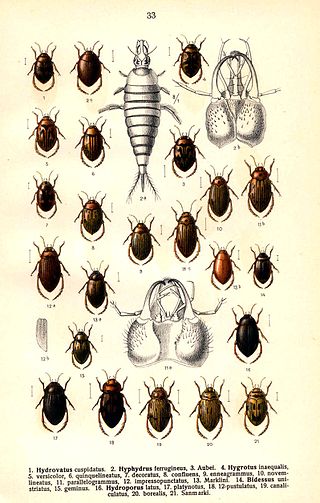
Hygrotus impressopunctatus is a species of Dytiscidae native to Europe.

Hygrotus versicolor is a species of Dytiscidae native to Europe.

Hygrotus quinquelineatus is a species of Dytiscidae native to Europe.
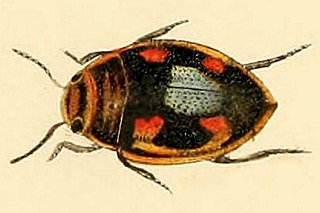
Hygrotus decoratus is a species of Dytiscidae native to Europe.
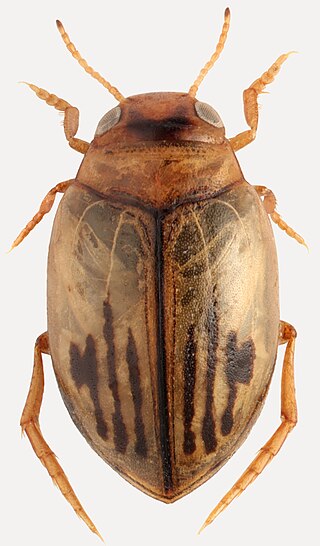
Hygrotus confluens is a species of Dytiscidae native to Europe.
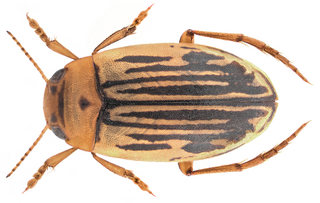
Hygrotus parallelogrammus is a species of Dytiscidae native to Europe.
Hygrotus sayi is a species of predaceous diving beetle in the family Dytiscidae. It is found in North America.
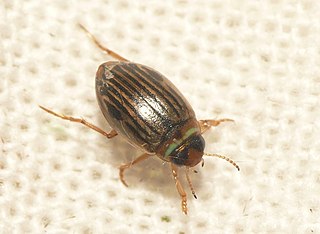
Hygrotus nigrolineatus is a species of Dytiscidae native to Europe.

Herophydrus musicus, is a species of predaceous diving beetle found in Asia and Europe.
Hyphoporus nilghiricus, is a species of predaceous diving beetle found in India, Pakistan, and Sri Lanka. Sometimes, the species is included into the genus Hygrotus by some authors.
Hyphoporus pugnator, is a species of predaceous diving beetle found in India and Sri Lanka. The species is sometimes placed in the genus Hygrotus by some authors.









